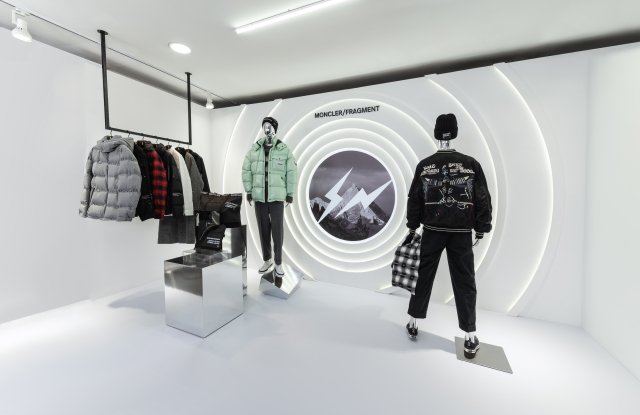MILAN — Moncler is accelerating its digital transformation and aiming to double its share of online sales in three years. The luxury company is bringing its e-commerce platform in-house, upon the expiration date of its contract with the Yoox Net-a-porter Group after nine years.
Moncler paid tribute to the YNAP collaboration, describing it as “fruitful” and instrumental in helping to grow the brand’s sales online “well beyond expectations.” Bringing its e-commerce in-house will begin with the U.S. and Canada in October and be completed in 2021.
In addition, Moncler will launch a fully integrated omnichannel e-commerce platform in 2021. The new platform will be inspired by the world of entertainment, and will be focused on ease of navigation, customized content and product personalization features.
To this end, Moncler is reorganizing its structure with an increasingly digitally integrated vision.
“After Moncler Genius, which rewrote rules and conventions and explored new ways of dialogue, we are at another turning point in the way we interact with our community,” said chairman and chief executive officer Remo Ruffini. “We have decided to directly manage our e-commerce, and soon we will offer a new platform concept where the experience will be at the center of an ever more tailored customer journey. At Moncler, every project ranging from the definition of collections to product development and events’ concept definition should be ‘digital first’ and must therefore be inspired and designed to perfectly fit digital platforms as the first touchpoint with the customer, to then be spread across all other channels.”
Ruffini noted that this “new approach requires a rapid organizational, cultural and technological evolution and opens us up to a future full of creativity, experimentation and ‘contamination’ of content as well as interactions with our consumers on all social channels.”
To support this plan, Moncler has created a new “Digital, Engagement and Transformation” function, which will help implement the brand’s strategy across all digital channels, to create new services and experiences for consumers.
The strategy requires Moncler to be more in tune with local cultural details and to be able to execute in a timely manner. In China, for example, the company is strengthening its local digital team with specialist roles dedicated to the definition of a targeted strategy and to digital innovation and experimentation.
On- and off-line will coexist on Moncler’s omnichannel model built around a customer who follows non-linear purchasing paths and who interacts with the brand in brick-and-mortar stores, as well as online and across social channels.
The new approach will allow Moncler to collaborate with other digital commerce channels.
As reported, the 7 Moncler Fragment Hiroshi Fujiwara collection was released on July 2 and the company developed a hybrid physical and digital strategy running through Japan, China and Europe. The project blended different media, connecting e-tailers, partners and wholesalers, tailoring each activation to the regional culture. On Monday, Moncler revealed that the Weibo livestream for the 7 Moncler Fragment Hiroshi Fujiwara collection generated 32 million views in one day. This is encouraging Moncler to continue to implement and experiment real time, live sales and livestreaming programs, to create customer engagement and develop a community.
In addition, the new “Monclient” application is a tool that helps staff in stores to advise on products available both on location and across all other sales channels, and to manage digital payments and after-sales requests without going through checkout, while also being able to view information relating to the customer and their preferences.
The digitization of the RFID-NFC anti-counterfeiting system, which already allows a customer to identify the garment through a smartphone, is evolving through blockchain technology.
Moncler is also investing in digital intelligence, digital performance and consumer insights tools with a new set of technological platforms to build data and a complete consumer overview. The use of artificial intelligence, already applied to quality control and warehouse management, demand planning and store replenishment, will be extended to new areas such as product recommendations on the e-commerce channel, client service interactions, merchandising and pricing.

